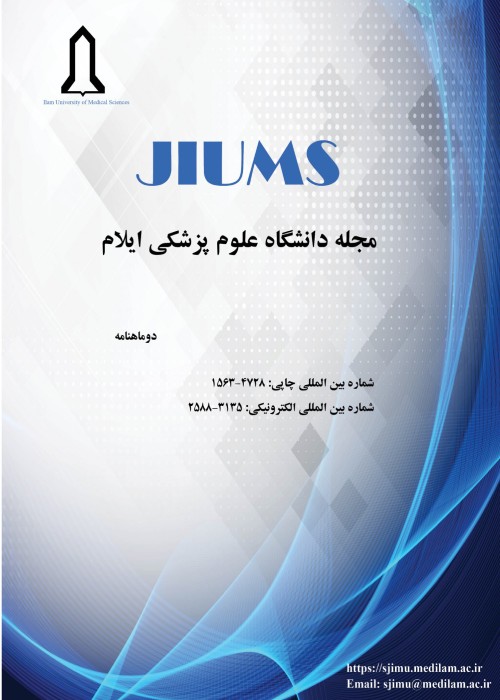Evaluating the Trend of Heavy Metals Concentration Changes in Feed Water to Reverse Osmosis, Feed and Permeate Water of Dialysis Instrument of Hemodialysis Patients-A (Case Study: Kermanshah Hospitals)
Author(s):
Abstract:
Introduction
During patients’ hemodialysis Circle, the amount of heavy metals in feed water to dialysis instrument and the patient’s blood are changed. The present study aims at evaluating the trend of lead, cadmium, chromium and zinc concentration in feed water to reverse osmosis, dialysis instrument and blood of hemodialysis patients in 7 hospitals of Kermanshah.Materials and Methods
A total of 42 samples of feed water, 42 samples of reverse osmosis systems permeate and 42 samples of hemodialysis instrument permeate were collected from 7 hospitals in Kermanshah. The collected samples were analyzed and the concentration of lead, chromium, cadmium and zinc were determined by using ICP (DV-Optima2100 model) according to a standard method. Furthermore, statistical analysis was carried out by using one-sample t-test to compare mean quality of feed water of dialysis instrument with AAMI and EPH standards. In addition, ANOVA test was used for comparing the results of three sample groups. Findings
The obtained results indicated that the mean concentration of lead, cadmium, chromium and zinc in feed water of reverse osmosis system (drinking water), were 18.53± 8.25, 0.706± 0.42, 86.06 ± 5.56, 112.67± 63.56pbb, respectively. Also, quantity of these constituents in the feed and permeate of electrolysis device was 18.81±5.32, 0.719±0.53, 84.25±2.46, 43.39±19.4pbb and 12.5±6.32, 1.39±0.87, 66.15±13.54, 60.38±22.39pbb, respectively. Due to obtained results, the removal efficiency of zinc and chromium by reverse osmosis system in dialysis instrument were 61.5 and 2.1%, respectively, while it was not effective in removing lead and cadmium metals. Discussion & Conclusion
Increasing the level of lead and cadmium in permeate water of the reverse osmosis system rather than the feed water indicated that the reverse osmosis membrane function is out of service; as a result, it is required to be washed or replaced. Decreasing both lead and chromium metals in permeate solution of the dialysis instrument revealed the addition of the amount of those two hazardous metals to the blood of hemodialysis patients, which could be related to reverse osmosis membrane deficiency and high concentration of metals in its water permeate.Keywords:
Language:
Persian
Published:
Ilam University of Medical Science, Volume:23 Issue: 4, 2015
Pages:
71 to 78
magiran.com/p1465911
دانلود و مطالعه متن این مقاله با یکی از روشهای زیر امکان پذیر است:
اشتراک شخصی
با عضویت و پرداخت آنلاین حق اشتراک یکساله به مبلغ 1,390,000ريال میتوانید 70 عنوان مطلب دانلود کنید!
اشتراک سازمانی
به کتابخانه دانشگاه یا محل کار خود پیشنهاد کنید تا اشتراک سازمانی این پایگاه را برای دسترسی نامحدود همه کاربران به متن مطالب تهیه نمایند!
توجه!
- حق عضویت دریافتی صرف حمایت از نشریات عضو و نگهداری، تکمیل و توسعه مگیران میشود.
- پرداخت حق اشتراک و دانلود مقالات اجازه بازنشر آن در سایر رسانههای چاپی و دیجیتال را به کاربر نمیدهد.
In order to view content subscription is required
Personal subscription
Subscribe magiran.com for 70 € euros via PayPal and download 70 articles during a year.
Organization subscription
Please contact us to subscribe your university or library for unlimited access!


